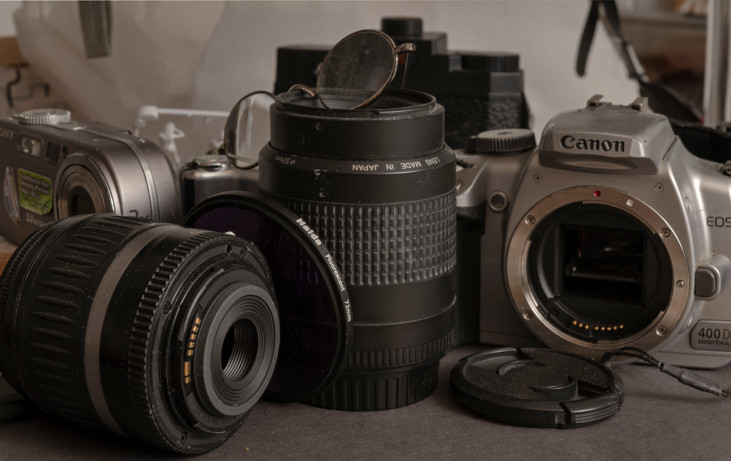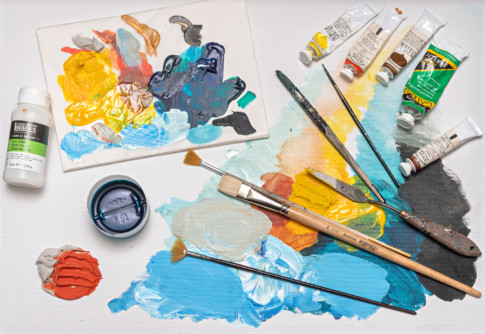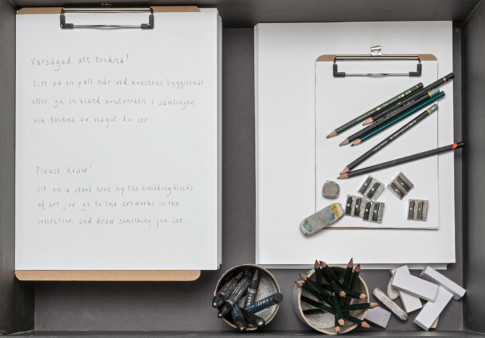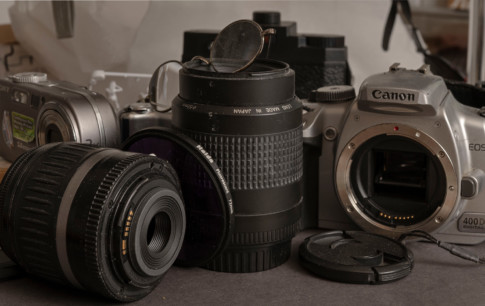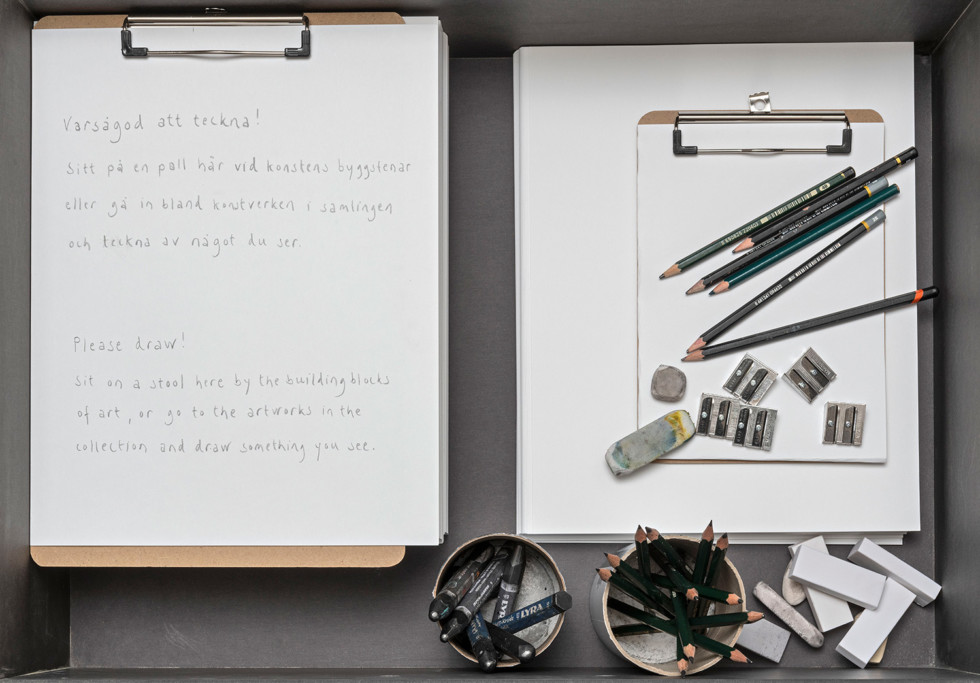
Tools for sketching, 2022 Photo: Albin Dahlström/Moderna Museet
Drawing
Generally, a sketch is a spontaneous “snapshot” of a situation that forms the basis for an idea which can be developed at some later stage. A drawing, on the other hand, is more of a finished product and can often stand as a work of art in its own right.
In the fifteenth century the author Leon Battista Alberti formulated the principles that have come to define the art of drawing: a point is made on a surface so that it is visible to the eye. Several points in an unbroken formation make a line. The line can be divided up into different sections, some of which are straight, while others are curved. Several lines together create a figure. Shading the figure creates a simulation of depth.
The artist Paul Klee expressed it somewhat differently: “A line is a point that has gone for a walk.”
The boundaries between drawing and painting may sometimes be blurred. If pencil lines are visible in a finished watercolour, the resulting image is classified as a drawing; if there are no visible pencil lines, it is considered to be a painting. A work produced with pastel crayons is often called a painting.
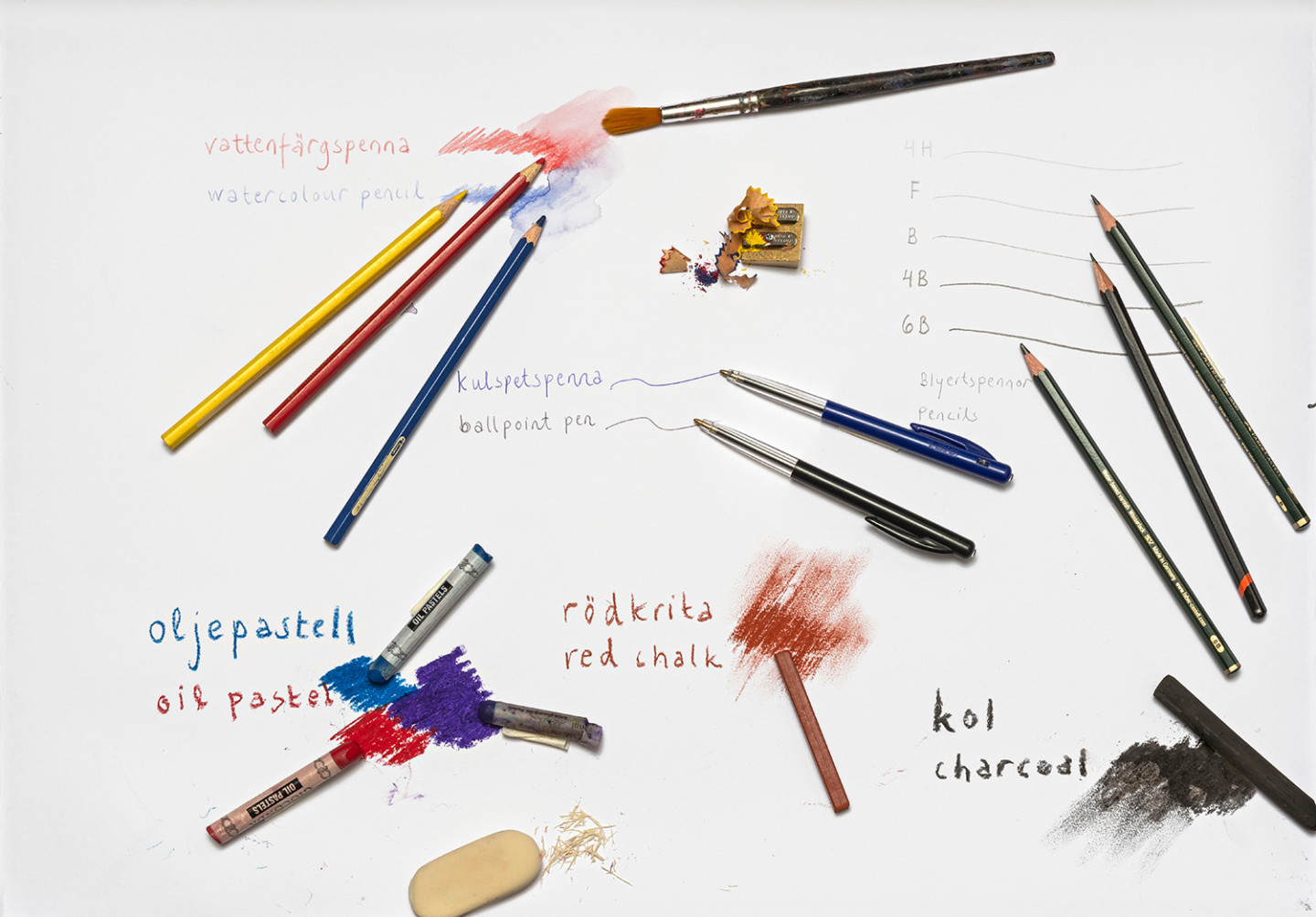
You can use all sorts of different things to help you to draw: for example, your finger on a steamy bathroom mirror, lipstick on a napkin, and sticks on the beach. But there is also a huge range of different pencils and crayons to choose from.
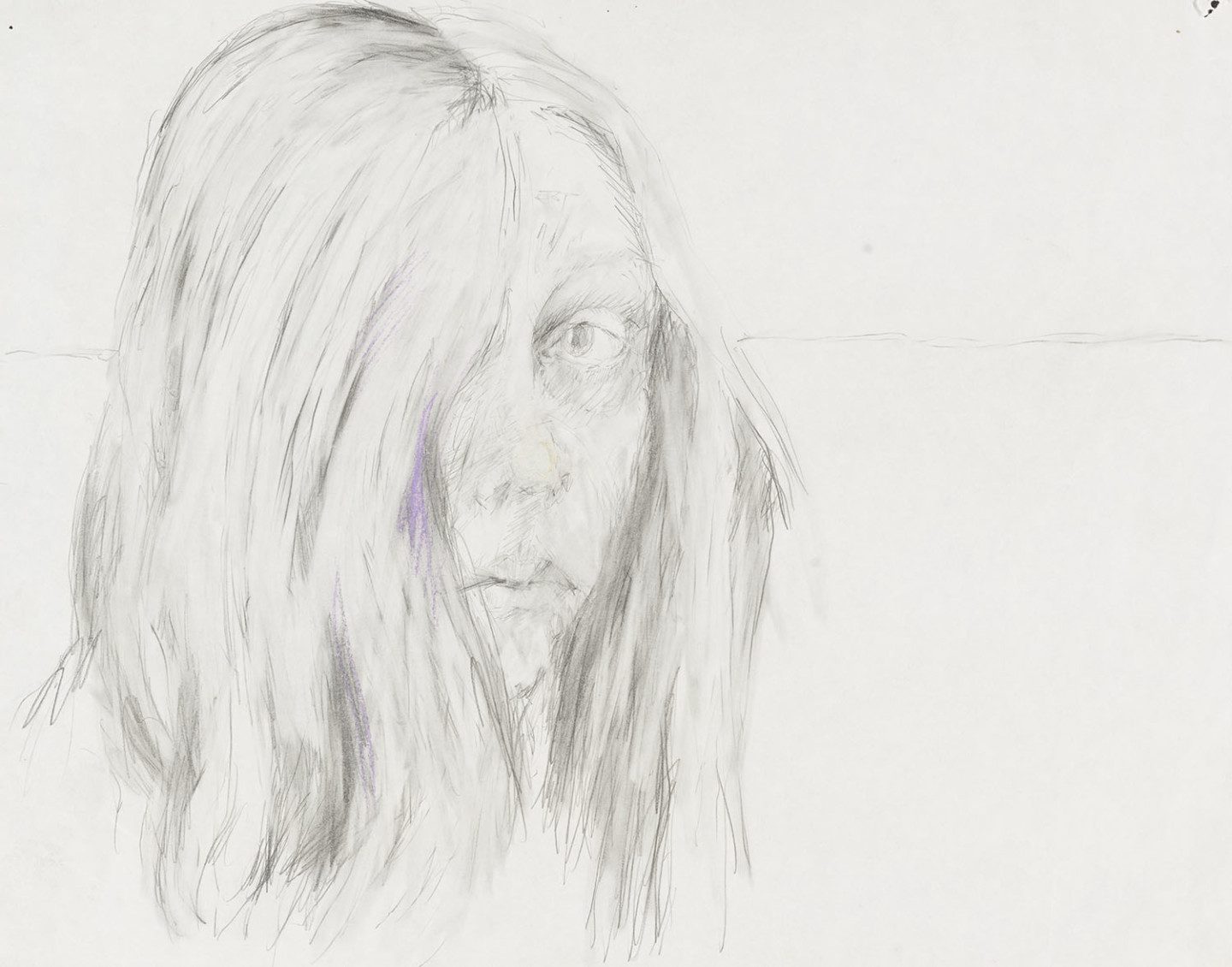
Pencils come in various degrees of hardness. A hard pencil makes fine, precise, light grey lines, whereas the marks made by a soft pencil are soot black in colour and slightly fuzzy. Graphite pencils are usually graded on a scale from the hardest 9H (where H stands for hard) to the softest 9B (where B stands for black).
Ink and ballpoints: The ballpoint pen does not generally command high regard today, as the ink is viscous and has a tendency to smudge. Nevertheless, certain artists have shown ballpoint pens some favour as a medium.
Liner pens have traditionally contained black ink that is produced with the aid of lampblack, a fine black pigment consisting of almost pure carbon. Liners are used for calligraphy and line drawings. Liners have what is known as high hiding power, in other words high opacity, but the medium can be diluted to produce a result that is semi-transparent.
Felt markers and felt tips are often referred to as markers or liners, even though they do not contain any lampblack.
Crayons come in many different forms. Most common are wax crayons, which are also often inexpensive. Charcoal pencils and charcoal sticks are made of compressed charcoal and produce an even shade of black.
When using charcoal as a medium, it is important the choose a grainy paper, in other words paper with a rough texture that allows more of the charcoal to adhere to the surface.
Pastel crayons are similar in some ways to charcoal, but they come in every conceivable colour and shade. There are both dry pastel crayons and oil pastels, whose pigments are mixed with waxes and oils.
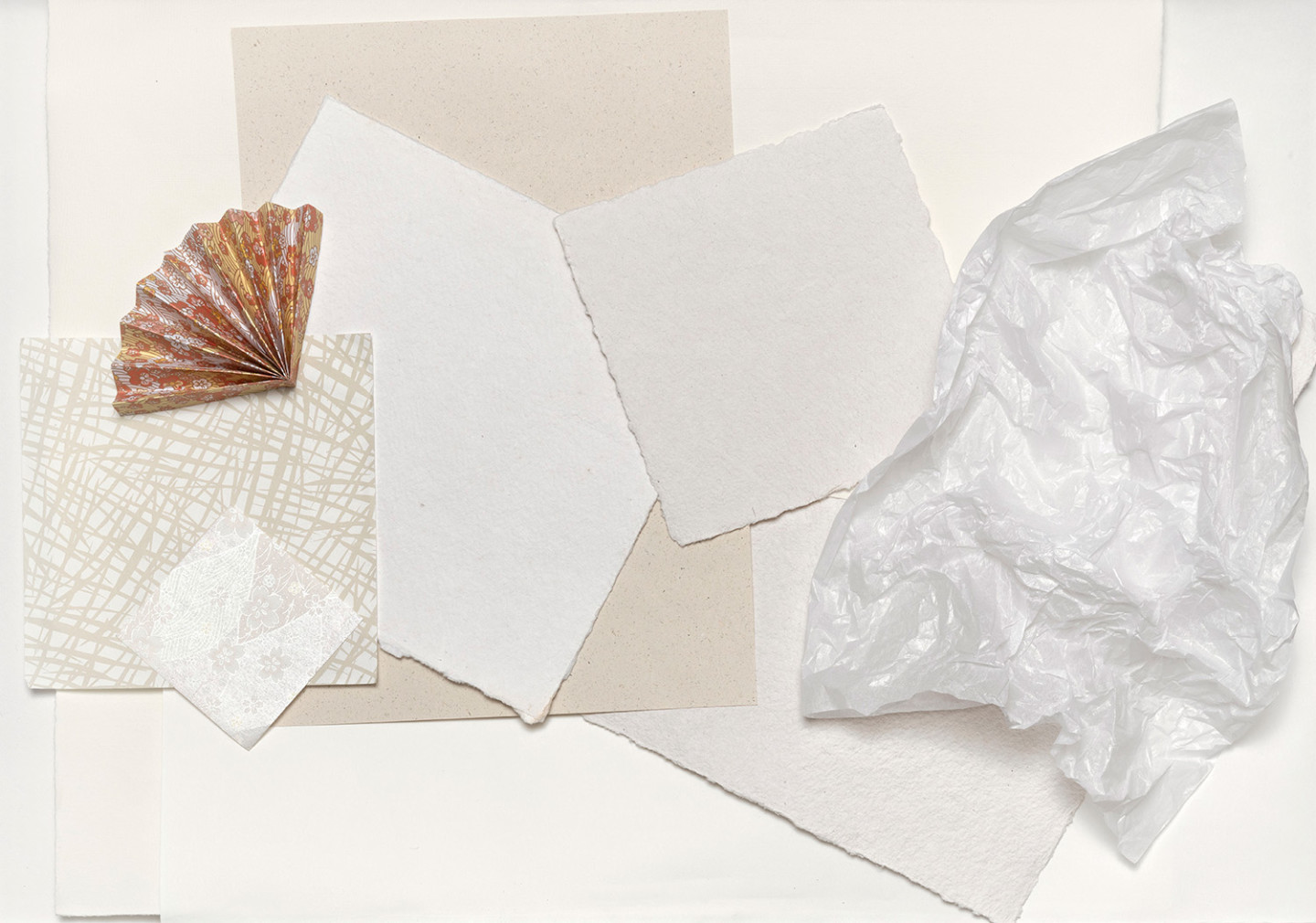
Paper comes in many different qualities. Some types of paper are well suited to pencil drawings, others are better for watercolours or acrylic colours. Rough grain papers, in other words paper with an uneven surface texture, or “tooth” as it is sometimes known, will cause a pencil to hop or skip across the surface.
Some paper qualities are so smooth that lines drawn in pencil can almost be wiped off the surface. Other types of paper contain visible plant fibres or even flowers (so called botanical inclusions).
Papers that need to be long-lasting without yellowing or becoming brittle are specially processed to remove any acidity in the paper.
Sketch paper is usually a thinner quality than drawing paper. Sketch paper is thin, lightweight paper that is ideal for quick studies and drawings in pencil and crayon. Using watercolours on sketch paper will cause the paper to buckle.
Drawing paper is a slightly stronger and sturdier quality that is well suited for use with pencils, markers and liners, as well as various types of crayon/chalk marker.
Watercolour paper is water-resistant, so it “holds” the liquid paint for a while before absorbing it.
Origami paper is a thin quality that has been specially processed to make it easy to fold into paper sculptures. Origami papers are often coloured or patterned on one side.
Silk paper and crêpe paper are thin, translucent papers that have been coloured. They are ideal for collage work, for example. Crêpe paper is characterised by its stretchability and elasticity, which means that it is possible to physically form the paper to a certain degree.
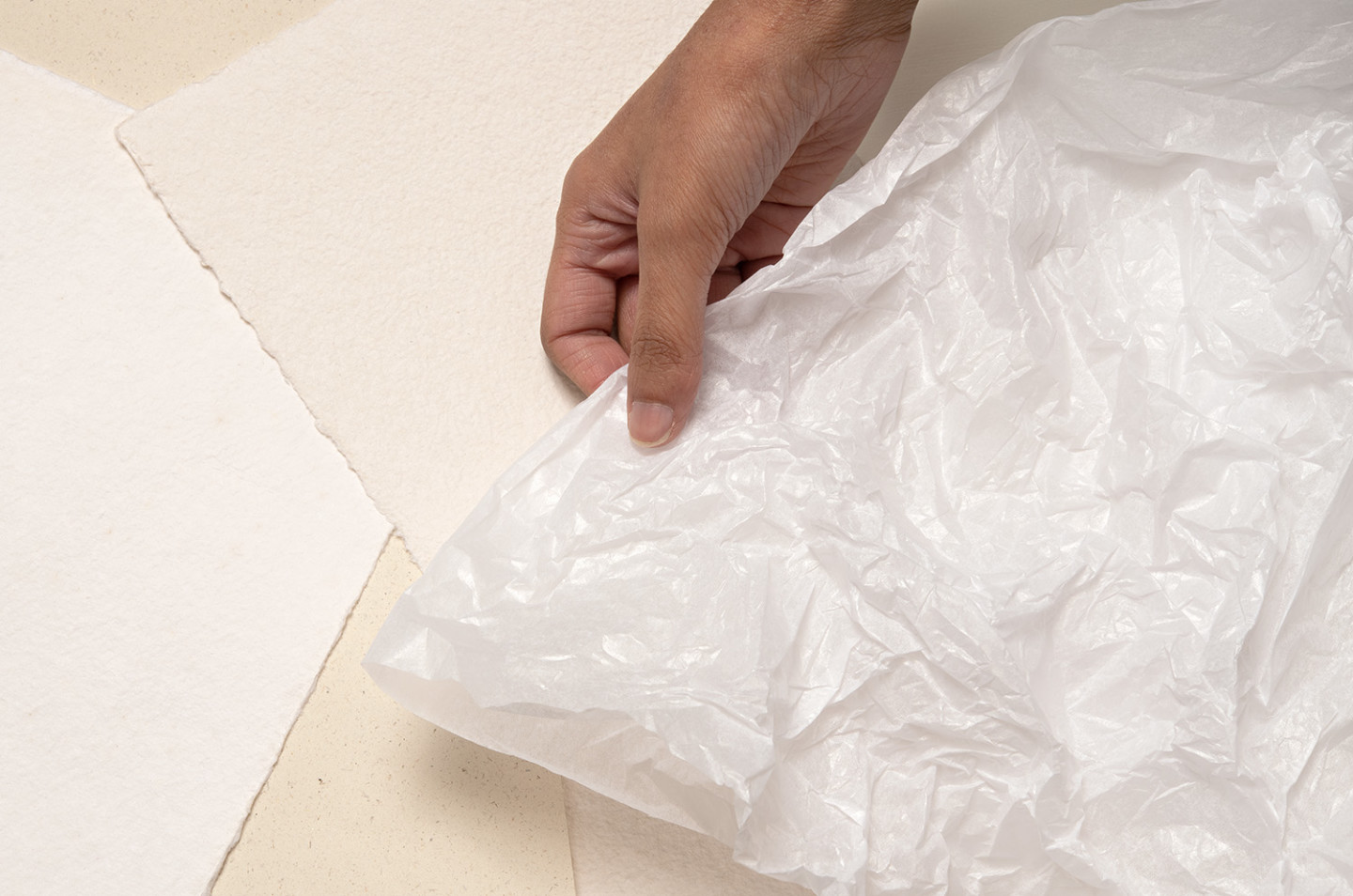
Many artists use sketch books. Pablo Picasso spent almost all of his time sketching and drawing, and he often used to browse through his old sketch books to seek inspiration.
Vera Nilsson was another inveterate sketcher, whose sketchbooks are now preserved in the collections of Moderna Museet. Hilma af Klint would sometimes make a sketch after she had completed a work, in order to better understand what it was that she had painted.
A sketchbook can serve as a sort of incubator for ideas. It is rare for a work of art to come into being out of the blue. An idea can begin to take shape without words, in the form of a notion or an impulse. It perhaps needs time to mature, before it is ready to be committed to paper. It may be a quick sketch that then develops and changes as an idea becomes more clearly defined.
A sketch may be translated into a three-dimensional model in paper or card, before subsequently being transformed into a finished sculpture in bronze, stone or wood. Or perhaps it will remain simply as a thought. Sometimes that is all it needs to be.
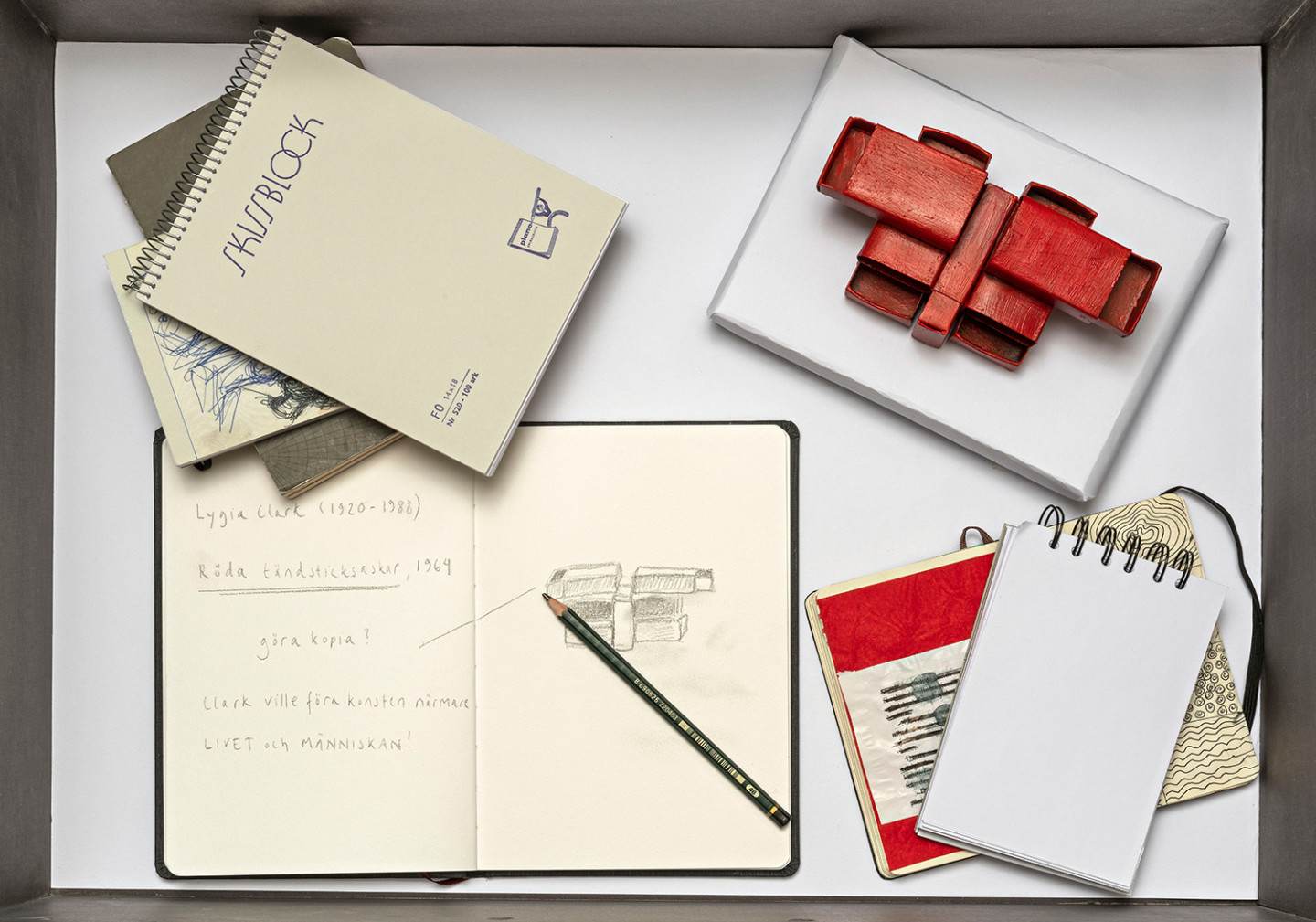
Lygia Clark’s “Red Matchboxes”
The little red sculpture is a copy of the Brazilian artist Lygia Clark’s “Red Matchboxes” from 1964 that can be found in our collection. The copy and the sketch are both the work of the artist and art educator, Hillevi Berglund.
Lygia Clark was one of the co-founders of the Neo-Concrete Movement in Rio de Janeiro in the late 1950s. Their aim was to bring abstract art closer to ordinary life and ordinary people.
In the early 1960s Clark began to work with interactive sculptures that the viewers themselves could play a part in forming. She had a keen interest in architecture and toyed with the idea of a house in which residents were able to move the walls according to their needs and moods.
The red boxes glued together evoke the idea of a modernistic building that can readily change its form simply by sliding the match trays in and out. They may even turn the viewer’s thoughts to the workings of the human heart. Despite the apparent simplicity of Lygia Clark’s small sculpture, it creates space enough for some very big ideas.
Painting
Within painting there are many different techniques, materials and tools. Did you know, for example, that ink painting originally comes from China and …
Painting
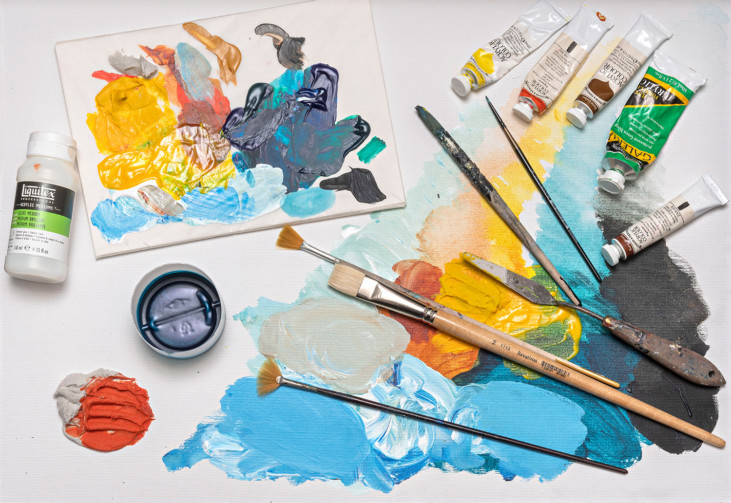
Photography
The word photography literally means “written in light” or “drawn with light”. Light is a key factor in the creation of every photographic …
Photography
